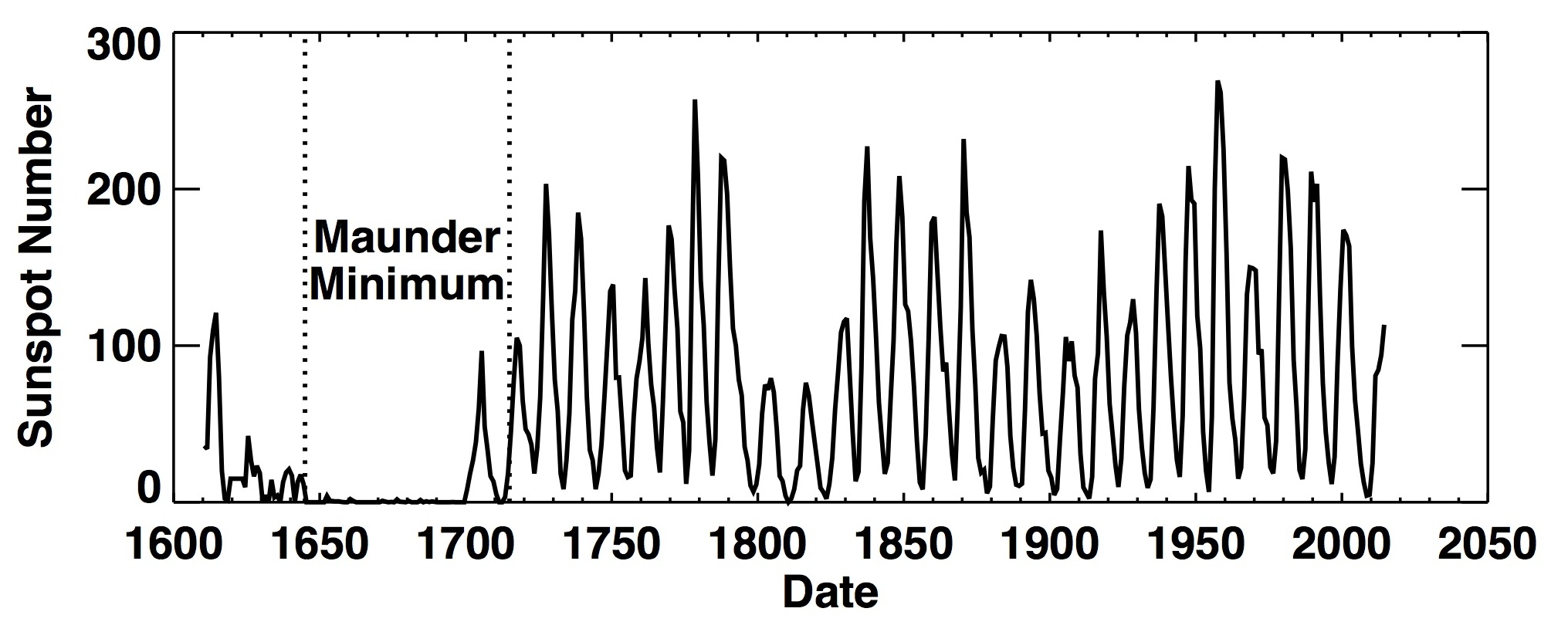The number of sunspots observed on the “surface” of the Sun varies from year to year.
Visible sunspots are caused by magnetic disturbances in the sun that displace its bright outer layer and reveal the slightly cooler (and darker) interior layers, usually for a few days but sometimes for several weeks.
They can vary in size, but are usually vast — often much larger than the entire Earth.
The latest picture of the sun and any sunspots
NOTICE:
There is an image outage of the Sunspot images due to a cooling water line burst in the Joint Science Operations Center (JSOC) at Stanford University on 2024-11-26. The images are provided by the Solar Dynamics Observatory (SDO) mission. Status updates are provided at SDO’s JSOC Emergency Resources page.
The length of the cycle is around eleven years on average – we’ve just finished Solar Cycle 24.
The NOAA/NASA co-chaired, international panel to forecast Solar Cycle 25 released their latest forecast for Solar Cycle 25. The forecast consensus: a peak in July, 2025 (+/- 8 months), with a smoothed sunspot number (SSN) of 115. The panel agreed that Cycle 25 will be average in intensity and similar to Cycle 24.
Additionally, the panel concurred that solar minimum between Cycles 24 and 25 will occur in April, 2020 (+/- 6 months). If the solar minimum prediction is correct, this would make Solar Cycle 24 the 7th longest on record (11.4 years).
The number of sunspots can vary from zero to ca. 200 at the height of the Solar Maximum.
Here’s a recent historic track and tentative forecast courtesy of the Royal Observatory of Belgium
And here’s an historic track of the number of sunspots all the way back to 1700
One interesting aspect of solar cycles is that the sun went through a period of near zero sunspot activity from about 1645 to 1715. This period of sunspot minima is called the Maunder Minimum. The “Little Ice Age” occurred over parts of Earth during the Maunder Minimum.
Although many theories have been proposed to linked sunspot cycles to climate change, none have been proven. Scientists now believe that the intensity of sunspot cycles is an indicator of the overall brightness of the sun, which changes on cycles of a century and does have an influence on climate.
Research by Dr. Judith Lean, a solar physicist at U.S. Naval Research Laboratory in Washington, D.C. and colleagues noted a strong correlation between solar output and temperatures since 1610. During the “Maunder Minimum,” the Sun was 0.25% dimmer than it is now.
This change goes well beyond the 0.1% dimming normaly associated with the 11-year sunspot cycle, so that a climate impact becomes much more probable.
If you enjoyed reading this, the please explore our other articles below:







